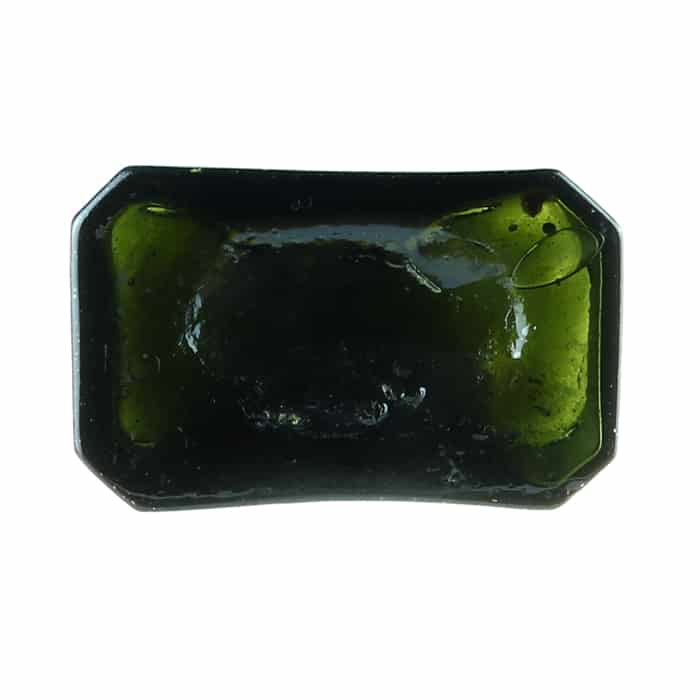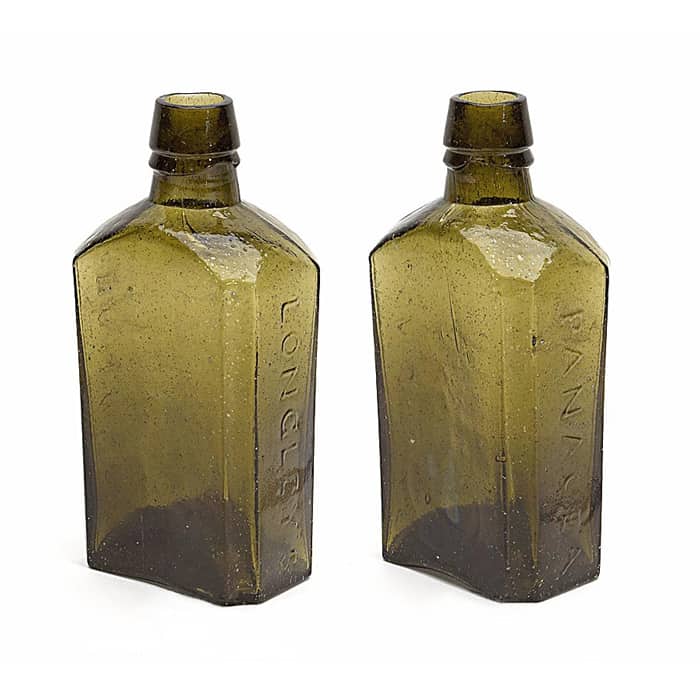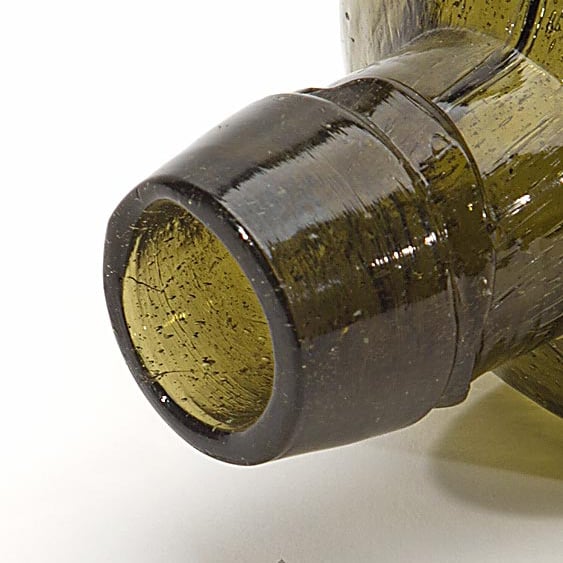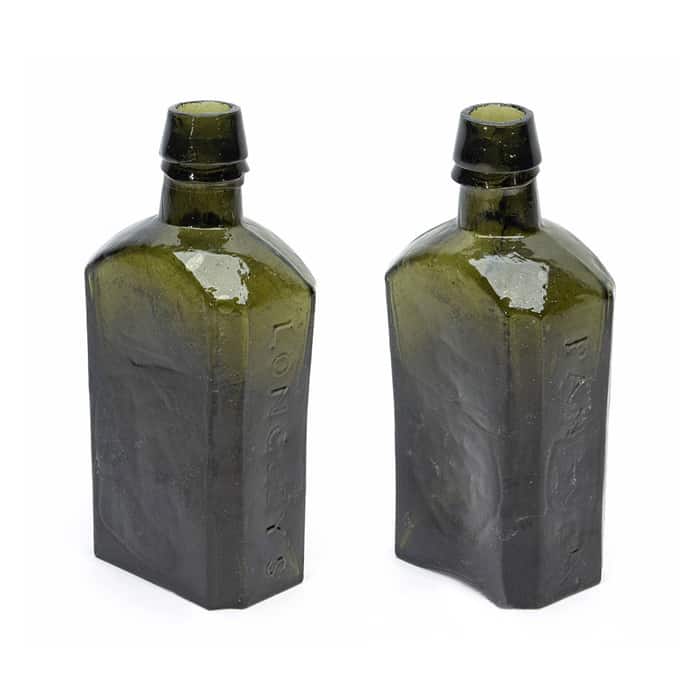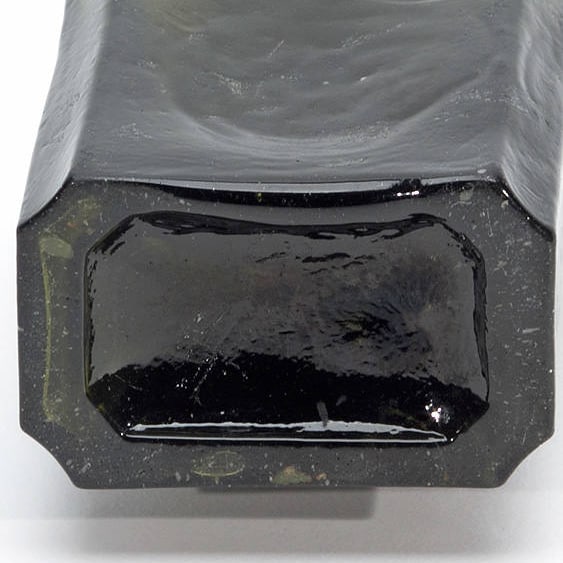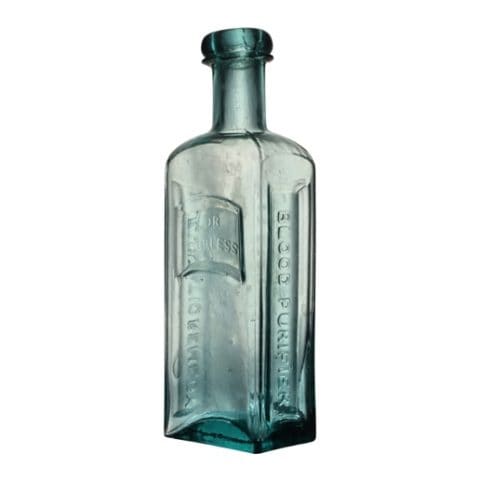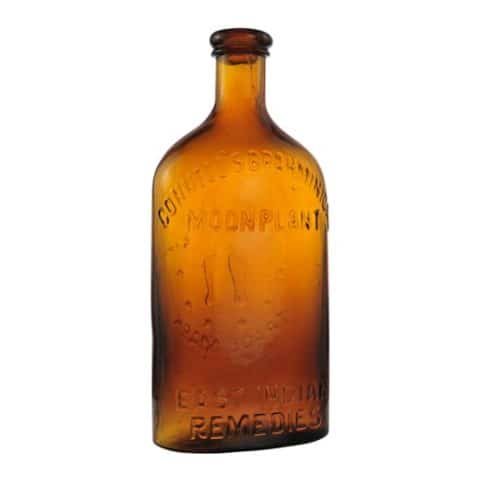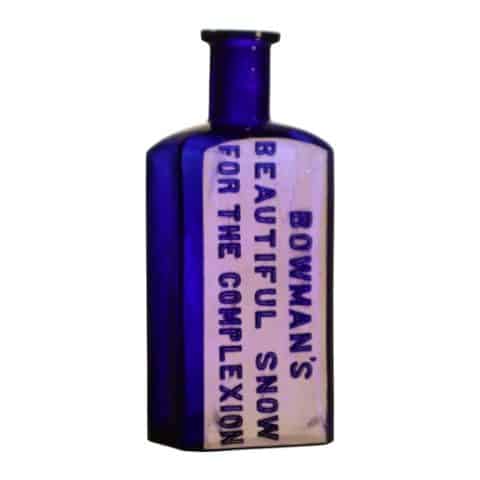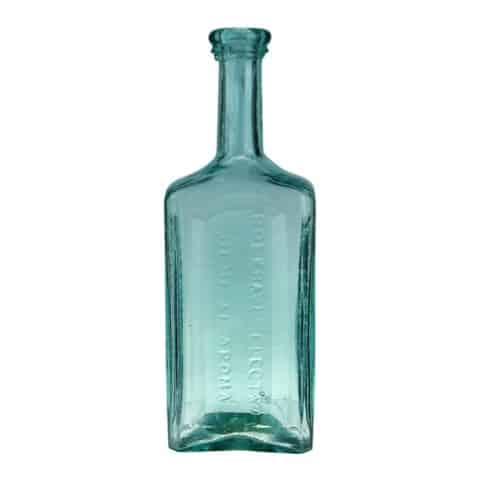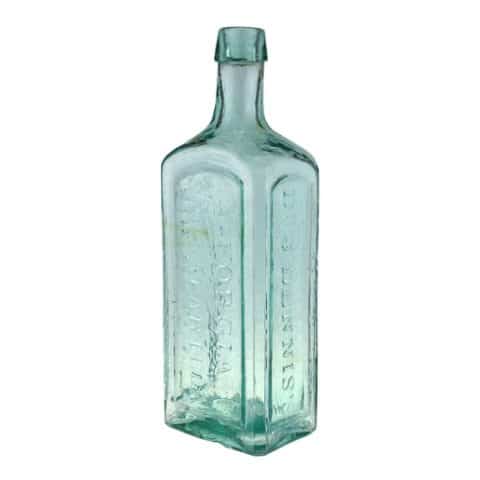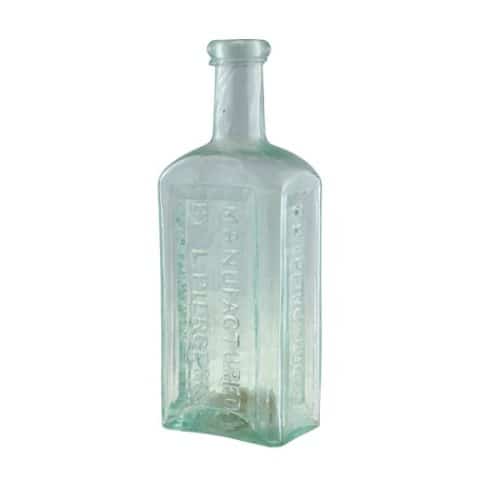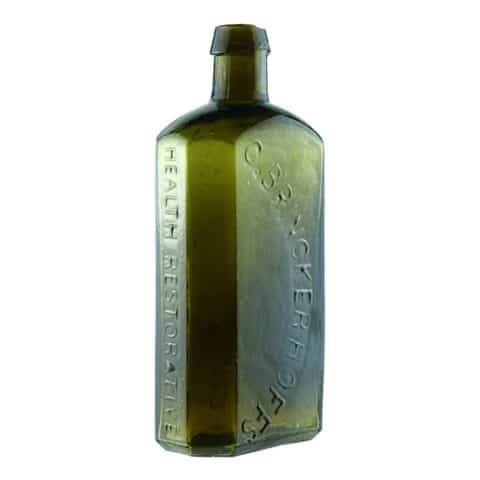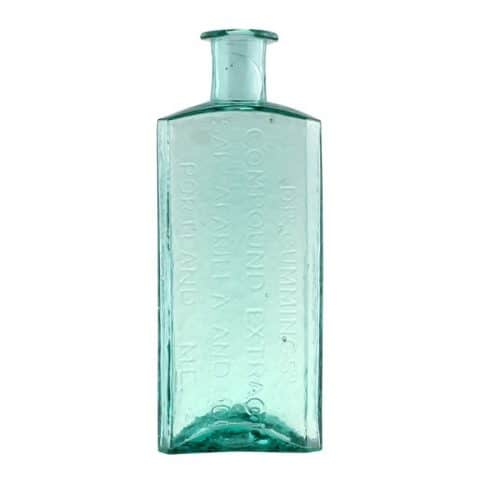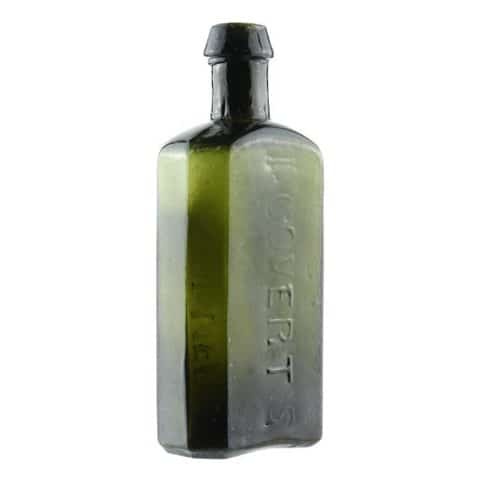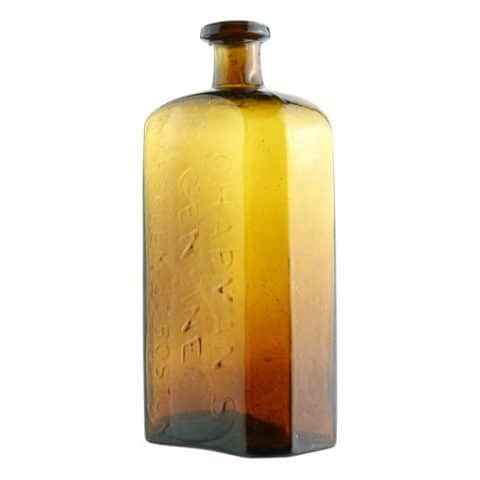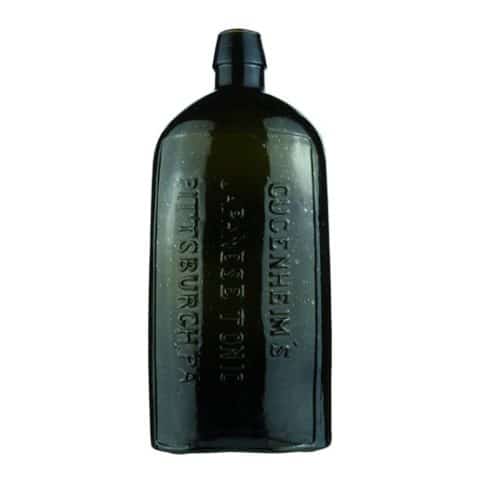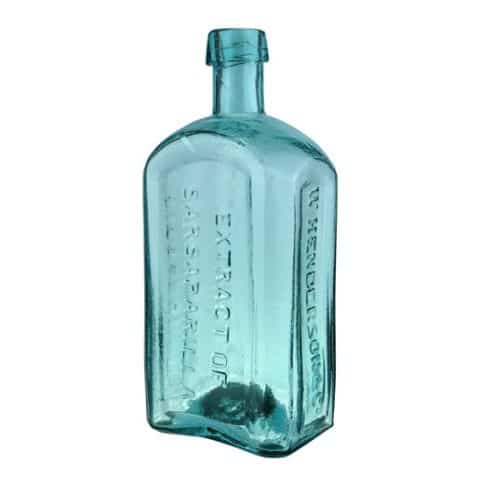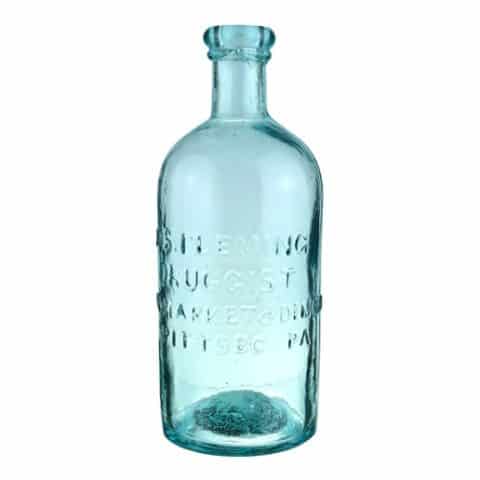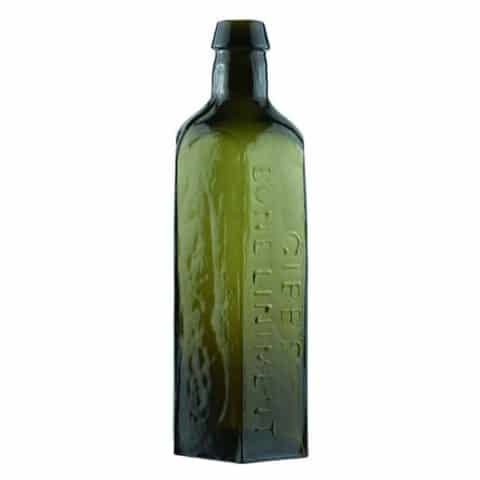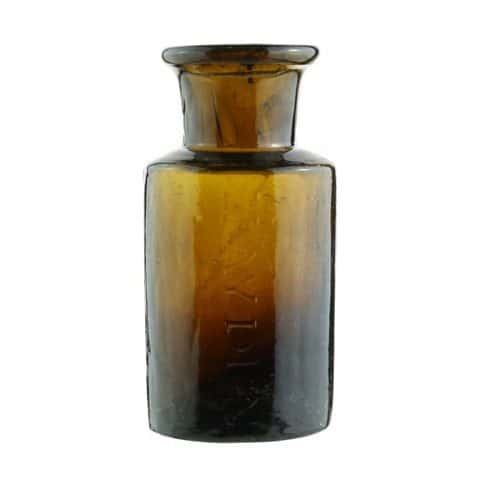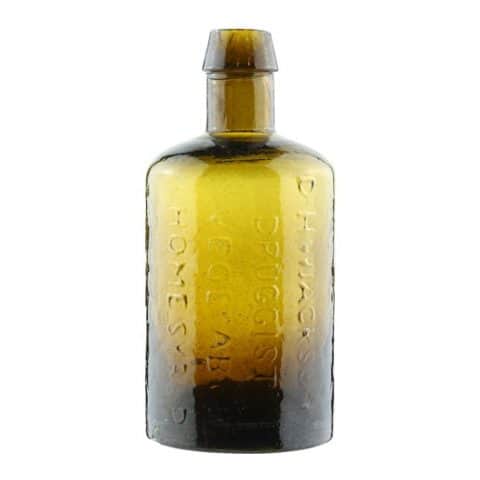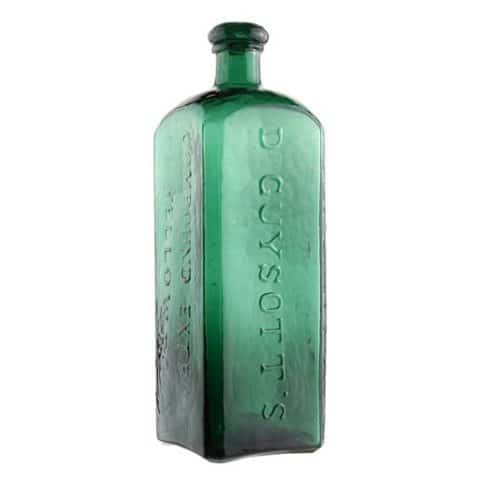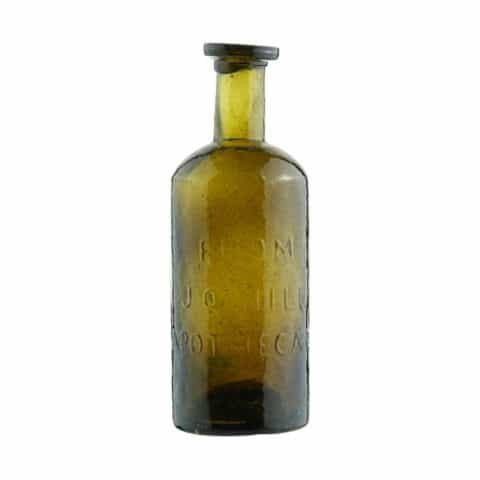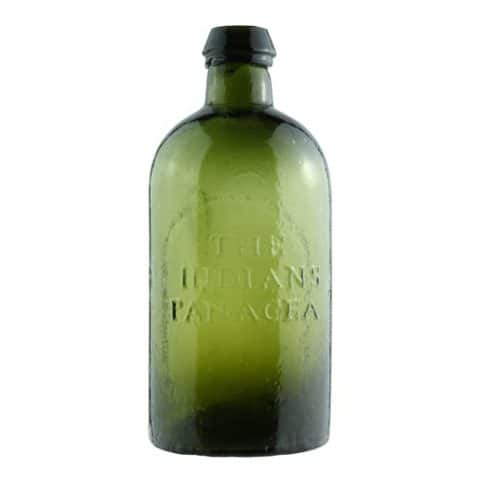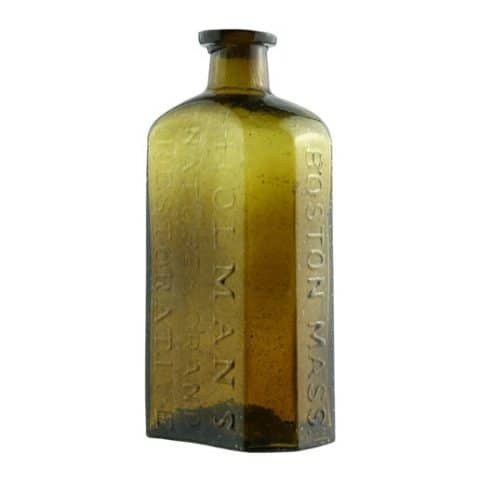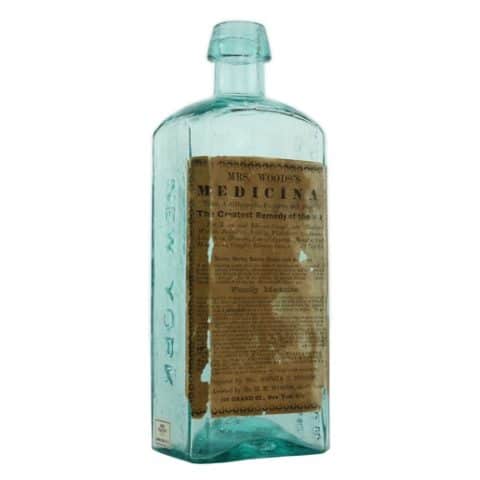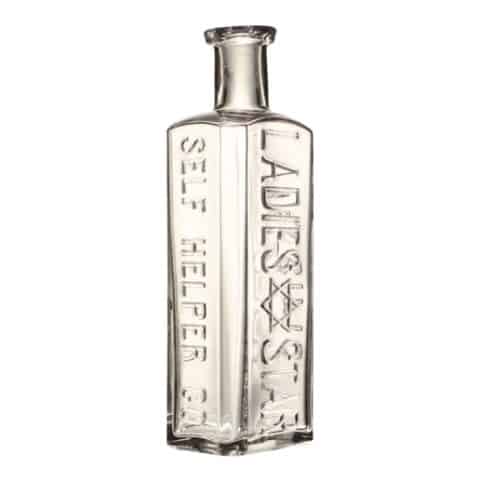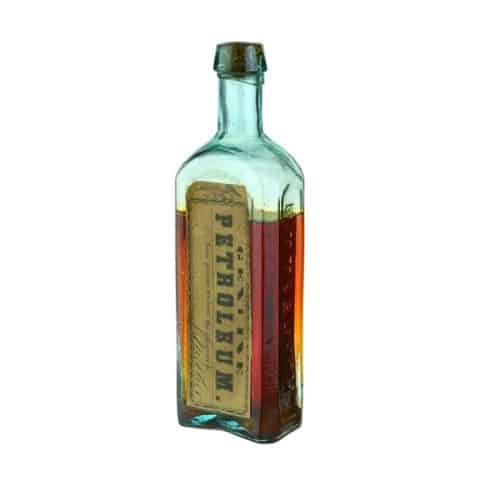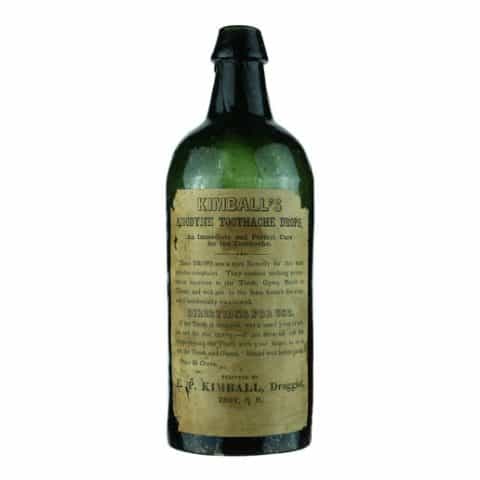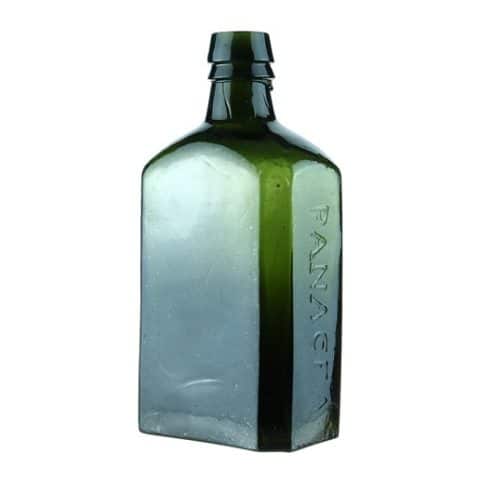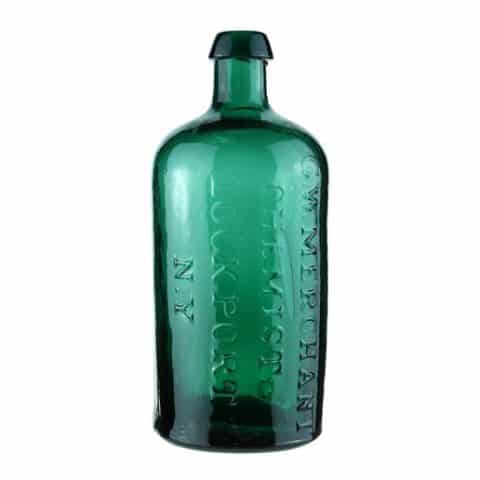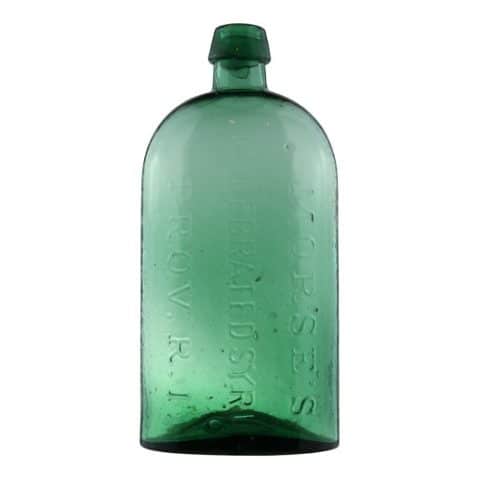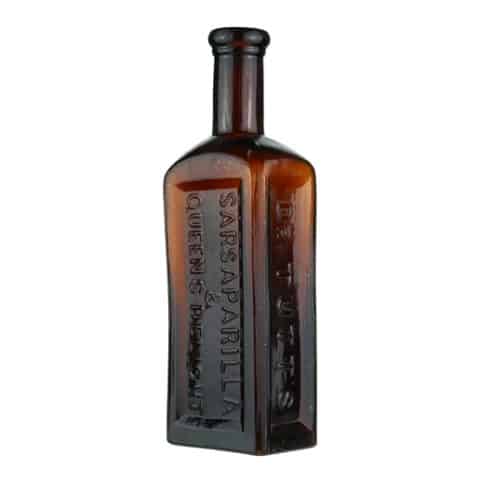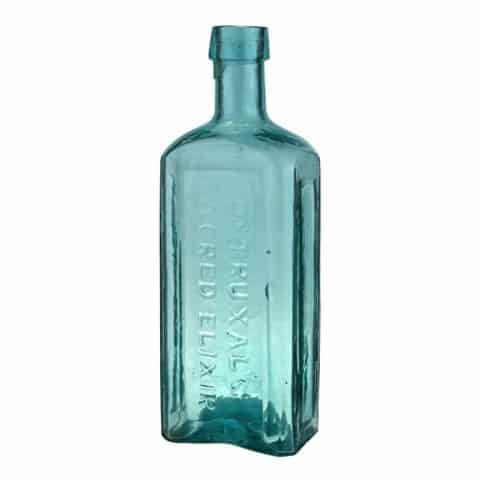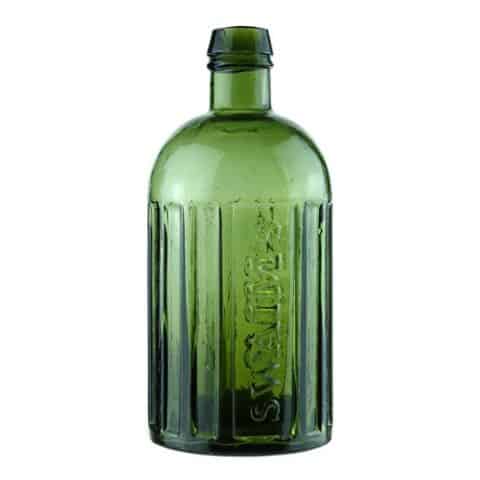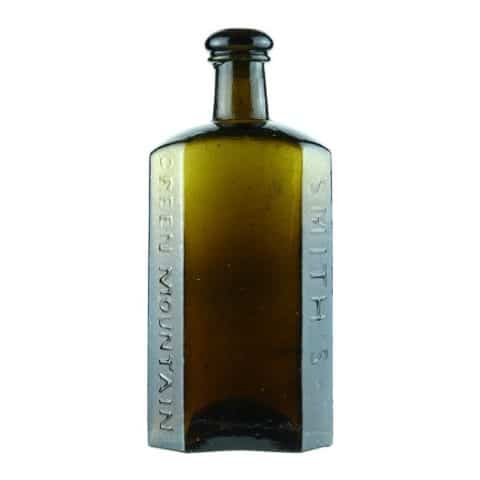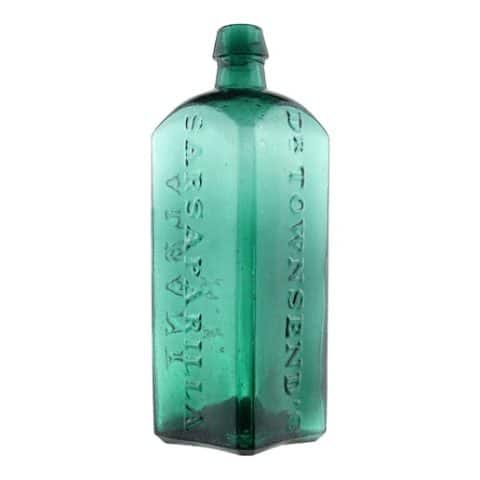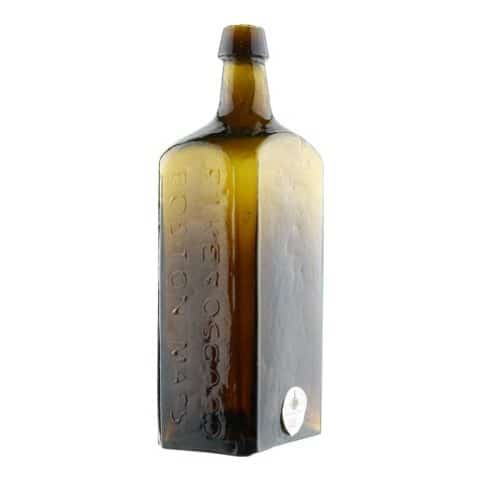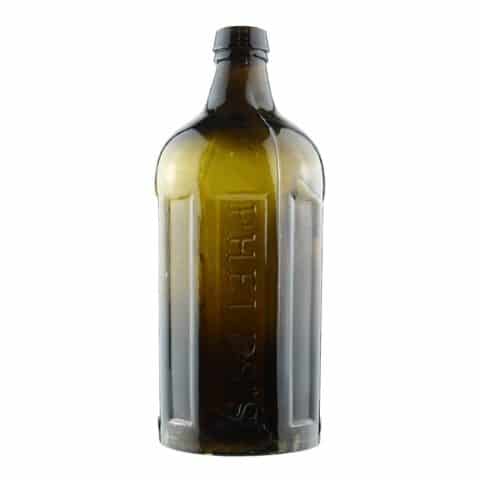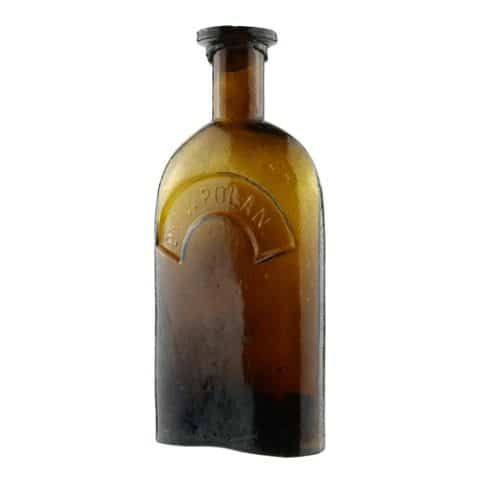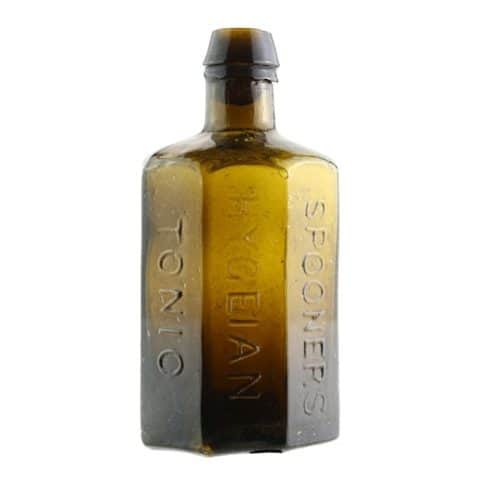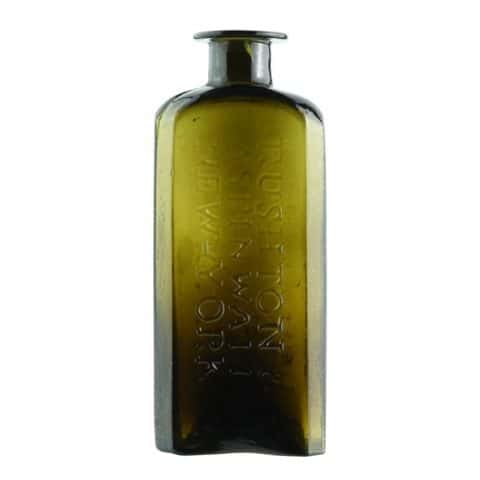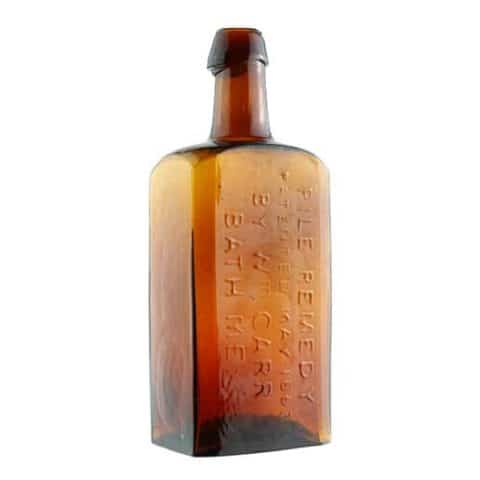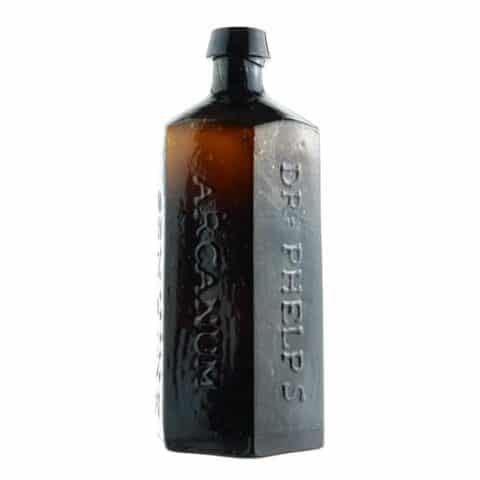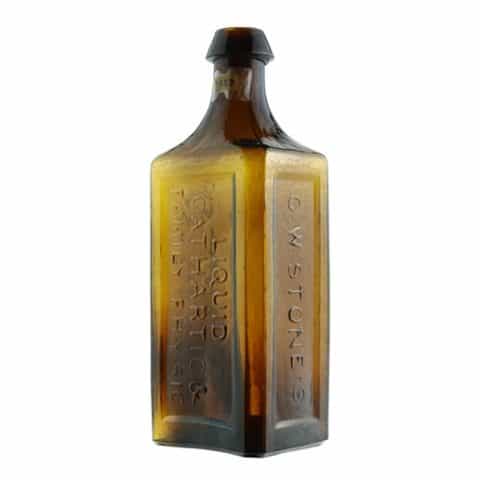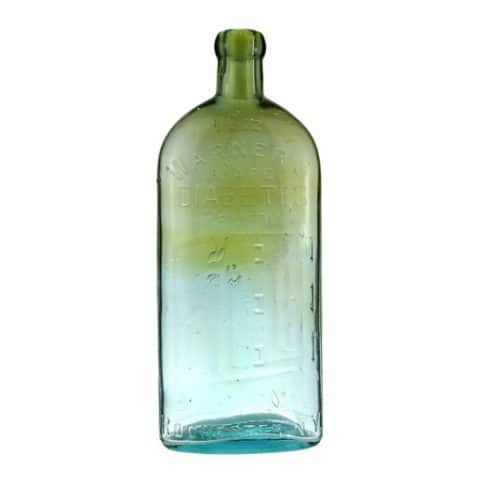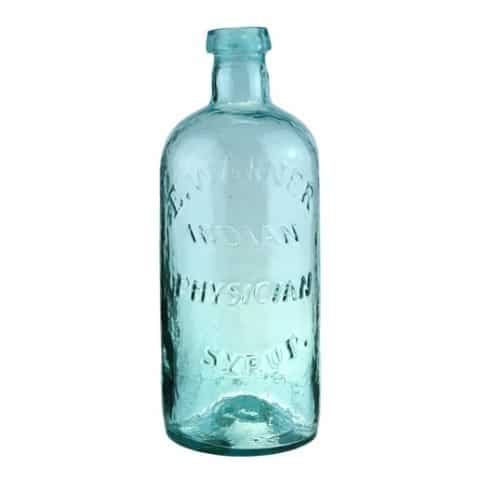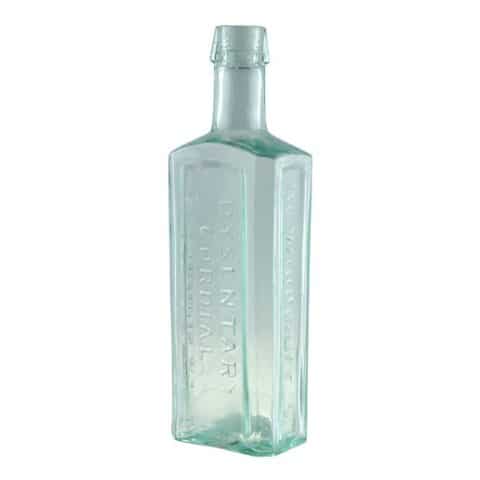Longley’s Panacea
Longley’s Panacea
Longley’s Great Western Indian Panacea
Comstock & Co., New York City, N. Y.
Olive Green Medicine
Provenance: Chris Bubash Collection
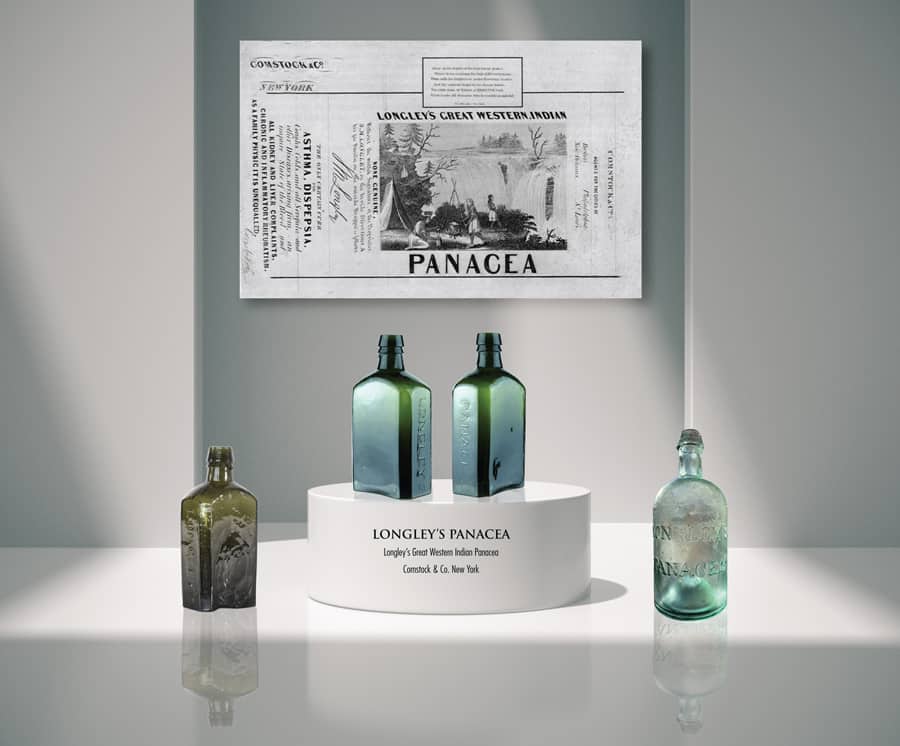
Longley’s Great Western Indian Panacea had its genesis in New York City when the city still consisted primarily of two-or three-story buildings and did not extend beyond the present 42nd Street. As you notice on the bottles represented, the product name was shortened to Longley’s Panacea when embossed on at least three molds of bottles throughout the product’s lifespan.
Our subject bottle is rectangular, 6 3/4 inches tall, and embossed, shoulder to base, in a serifed typestyle ‘LONGLEY’S’ and ‘PANACEA’ on two opposite short sides of the bottle. The broad obverse and reverse panels are blank and would have been where a paper label would have been placed. All panels have broad, graceful beveled corners. The glass color is rich deep olive green. There is a pontil scarred base and an applied double collar mouth atop a squat tapered neck.
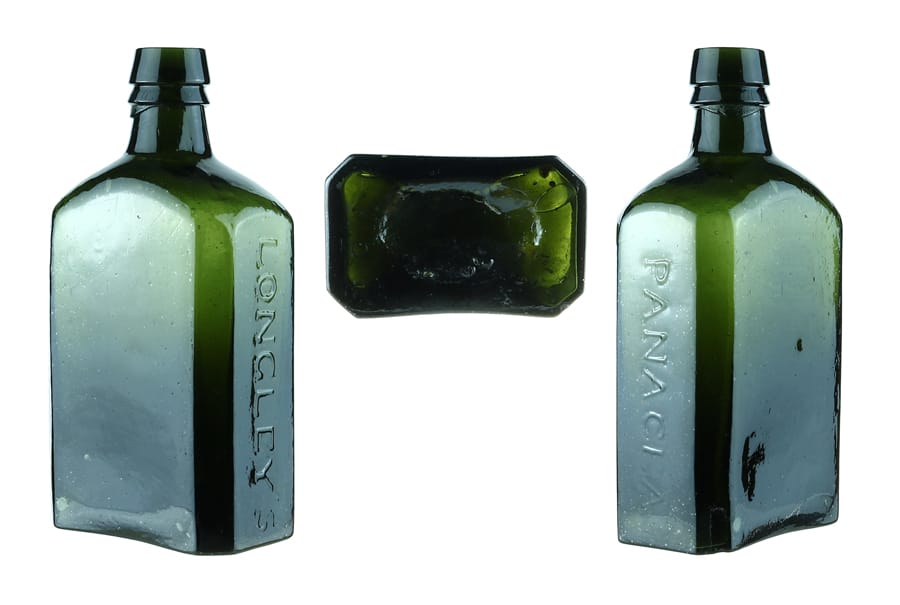
A slightly taller aquamarine variant exists with four recessed panels. The bottle was made somewhere from 1850 to 1860. Earlier renditions of the bottle were aquamarine, cylindrical, and horizontally embossed in two lines. An example is represented in the gallery.
Advertising said Longley’s Great Western Indian Panacea was compounded entirely from vegetable substances and free from calomel and other minerals. The medicine was recommended for the following diseases: Asthma, Dyspepsia, Bronchitis, Kidney and Liver Complaints, Coughs, Colds, and as a family physic. “Its success thus far in curing the above diseases, in all climates where it has been tried, is truly astonishing” was featured in advertising.
The product was popular, as evidenced by the following statement, “Hitherto, the proprietor has not been able to give the panacea a universal circulation because the immediate demand has outrun the supply, but he is now prepared to supply all the cities and principal towns in the United States, British Provinces, and West Indies. With this field, he must be content for the present.”
Advertisements within the New York Tribune (New York City) in early 1843 recount the following history:
“In the year 1833, Col. Longley was on the upper Lakes, attending the payment of the Government annuities to the North Western Indians, where he had a violent attack of his old complaint, the Asthma, which threatened his life. After trying in vain the usual remedies, an Agent of the Home Missionary induced him to try a remedy from the hand of a celebrated Indian “Medicine Man,” which proved effectual and raised him from the verge of the grave. With much trouble and expense, he obtained a knowledge of the compound; and in gratitude to his Indian benefactor, he conferred upon it its present name.”
Whether this is true or not, it certainly gave the product credibility as newspaper advertising was full of glowing product endorsements addressed to “Col. Longley.” Requests for the product and information led the reader to “305 Broadway, at the corner of Grand and Mulberry Streets.” This statement led the reader to believe Colonel Longley was sitting behind a desk reading letters and running the business. In 1844, all newspaper advertising noted that Comstock & Co. was the proprietor of Longley’s Panacea and many other popular medicines.
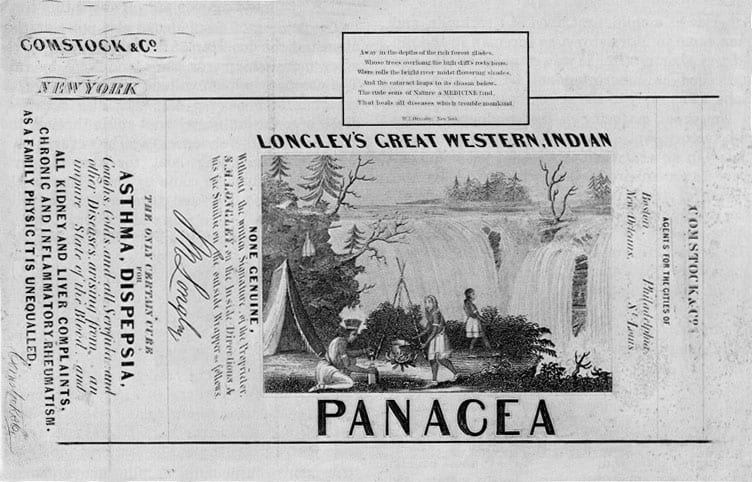
The founder of the Comstock drug business was Edwin Comstock, sometime in or before 1833. Edwin was a son of Samuel Comstock of Butternuts, Otsego County, New York. Samuel, a fifth-generation descendant of William Comstock, one of the pioneer settlers of New London, Connecticut, and ancestor of most of the Comstocks in America, was born in East Lyme, Connecticut, a few years before the Revolution. Sometime after the birth of Edwin in 1794, he moved to Otsego County, New York.
Edwin, in 1828, moved to Batavia, New York, where his son, William Henry Comstock, was born on August 1, 1830. He may have worked in Batavia and learned the drug business in the drug store of Dr. Levant B. Cotes. Unfortunately, the store was destroyed in the village-wide fire of April 19, 1833. The termination of Edwin’s career in Batavia might have been associated either with that disaster or with the death of his wife in 1831. However, within four or five years, Edwin moved to New York City, where he established the extensive drug and medicine business on Cortlandt Street that was to be carried on by members of his family for over a century.
Between 1833 and 1837, Edwin employed his brother, Lucius S. Comstock (born in 1806), as a clerk, and for the next fifteen years, Lucius would be the primary factor in running the business. As was a common practice, Lucius added the designation “M.D.” to his name, claimed membership in the Medical Society of the City of New York, and described himself as a Counsellor-at-Law.
Edwin died in 1837, and Lucius continued the business in partnership with another brother, Albert Lee, under the style of Comstock & Co. Two more brothers, John Carlton (born 1819) and George Wells (born 1820), were employed as clerks. The partnership of Comstock & Co. between Lucius and Albert was terminated by a dispute between the two brothers in 1841, and Albert went his own way, taking up a career as a physician and living until 1876.
Lucius next went into business with his mother-in-law, Anne Moore, from 1841 to 1846; after the dissolution of this firm, he formed a new partnership, also under the name of Comstock & Co., with his brother John (generally known as J. Carlton). This firm again employed as clerks George Wells Comstock and a nephew, William Henry, a son of Edwin.
In March of 1849, a new partnership was formed, comprising Lucius, J. Carlton, and George Wells, under Comstock & Co. Brothers. However, the existing partnership of Comstock & Co. was not formally terminated. Assets, inventories, and receivables in the collection process were assigned by Comstock & Co. to Comstock & Co. Brothers.
Before the end of 1849, the partners quarreled, as Lucius fell out with his brothers, and after a period of discord. The firm of Comstock & Co. Brothers was dissolved as of August 1, 1850. On or about the same date, J. Carlton and George Wells formed a new partnership, under the name of Comstock & Brother, doing business at 9 John Street in New York City, also taking their nephew, William Henry, as a clerk. Lucius continued in business at the old address of 57 John Street. As early as June 30, 1851, the new firm of Comstock & Brother registered the following trade names with the Smithsonian Institution: Carlton’s Liniment, a certain remedy for the Piles; Carlton’s Celebrated Nerve and Bone Liniment for Horses; Carlton’s Condition Powder for Horses and Cattle; Judson’s Chemical Extract of Cherry and Lungwort. The repetition of his name suggests that J. Carlton was the principal inventor of his firm’s remedies.
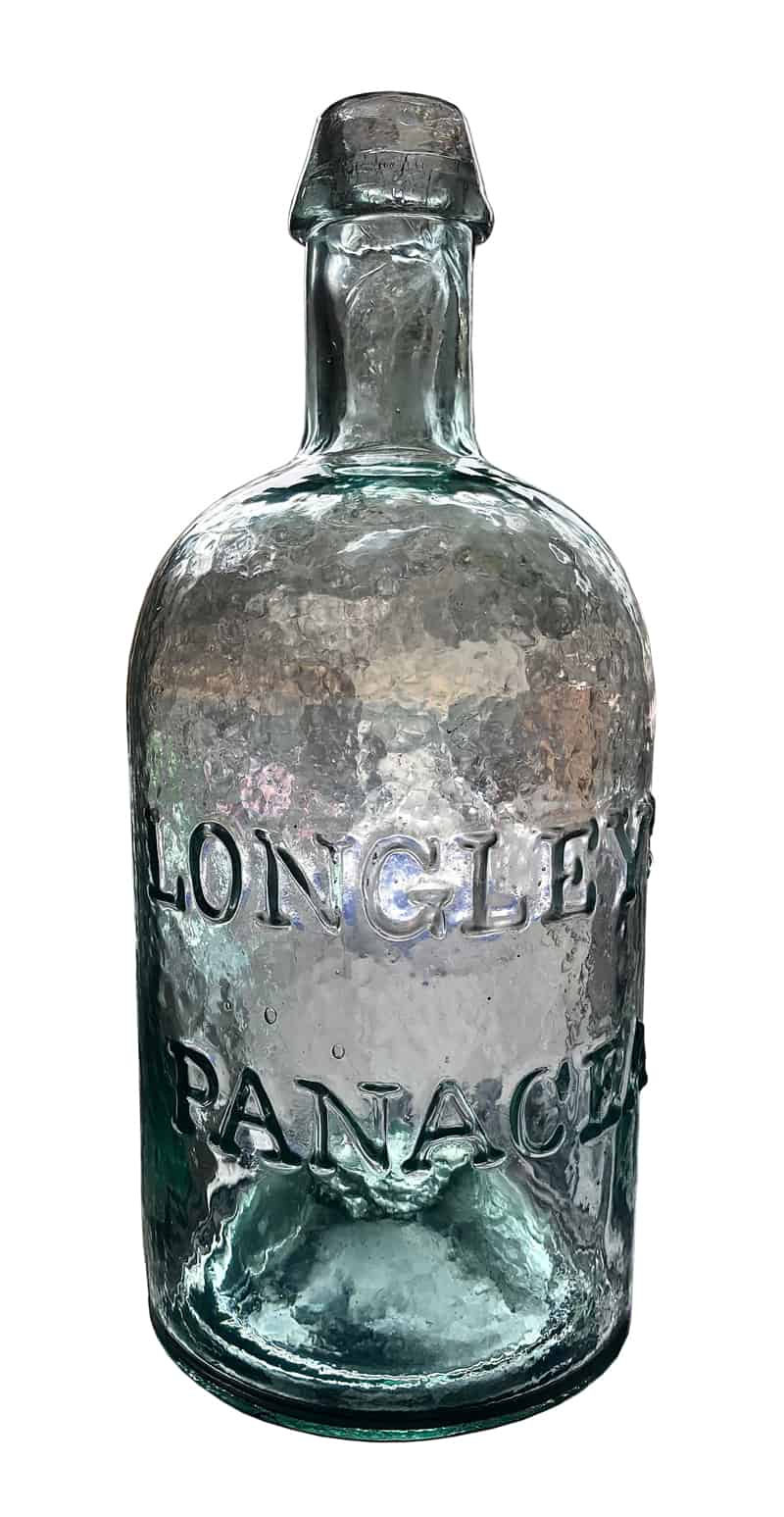
Primary Image: Longley’s Panacea imaged on location by Alan DeMaison, FOHBC Virtual Museum Midwest Studio
Support: Reference to History of the Comstock Patent Medicine Business and Dr. Morse’s Indian Root Pills by Robert B. Shaw, Smithsonian Institution Press, City of Washington, 1972
Support Image: Auction Lot 177: “Longley’s” – “Panacea” Medicine Bottle, America, 1850-1860. Rectangular with concave corners, deep yellow-green with an olive tone, applied sloping collared mouth with ring – smooth base, ht. 6 inches; (moderate exterior high point wear, somewhat weakened embossing, minor roughness on the inner edge of mouth). AAM pg. 321 A heavy and crude example in a deep yellow-green color. – Norman Heckler Jr. & Sr., Norman C. Heckler & Company, Auction #158
Support Image: Auction Lot 23: “Longley’s / Panacea” Medicine Bottle, America, 1860-1870. Rectangular with beveled corners, medium yellow olive, applied sloping collared mouth with ring – smooth base, ht. 5 7/8 inches; (several manufacturing-related stress fissures in the neck and mouth). AAM pg. 321 An attractive example with crisp, crude embossing and numerous bubbles. – Norman Heckler Jr. & Sr., Norman C. Heckler & Company, Auction #128
Support Image: LONGLEYS “Great Western Indian” PANACEA Medicine Bottle – New England Glasshouse c. 1855 – 1865. Bright, pure olive (no yellow or amber), almost a forest green, rectangular with beveled corners, applied sloping collared mouth with lower bevel – early (fire-polished) smooth base, ht. 5 7/8”; (a tiny, hard-to-see, pinpoint flake on the inside edge of the mouth and a couple of small areas of light bloom or matt dullness, otherwise attic mint). A crude, great example, good color. – Vermont Medicines
Support Image: Recently unearthed, aquamarine cylindrical Longley’s Panacea represented in Privy Dig Diaries: Log # 154 – The House had an Illness in the May–June 2022 issue of the FOHBC Antique Bottle & Glass Collector magazine. Article and image, Fred DeCarlo.
Join the FOHBC: The Virtual Museum is a project of the Federation of Historical Bottle Collectors (FOHBC). To become a member.

